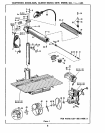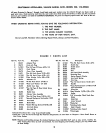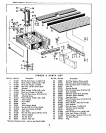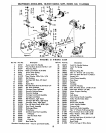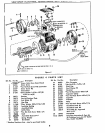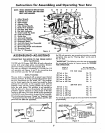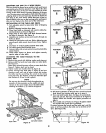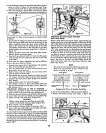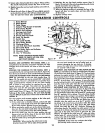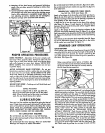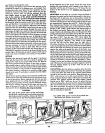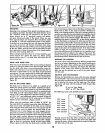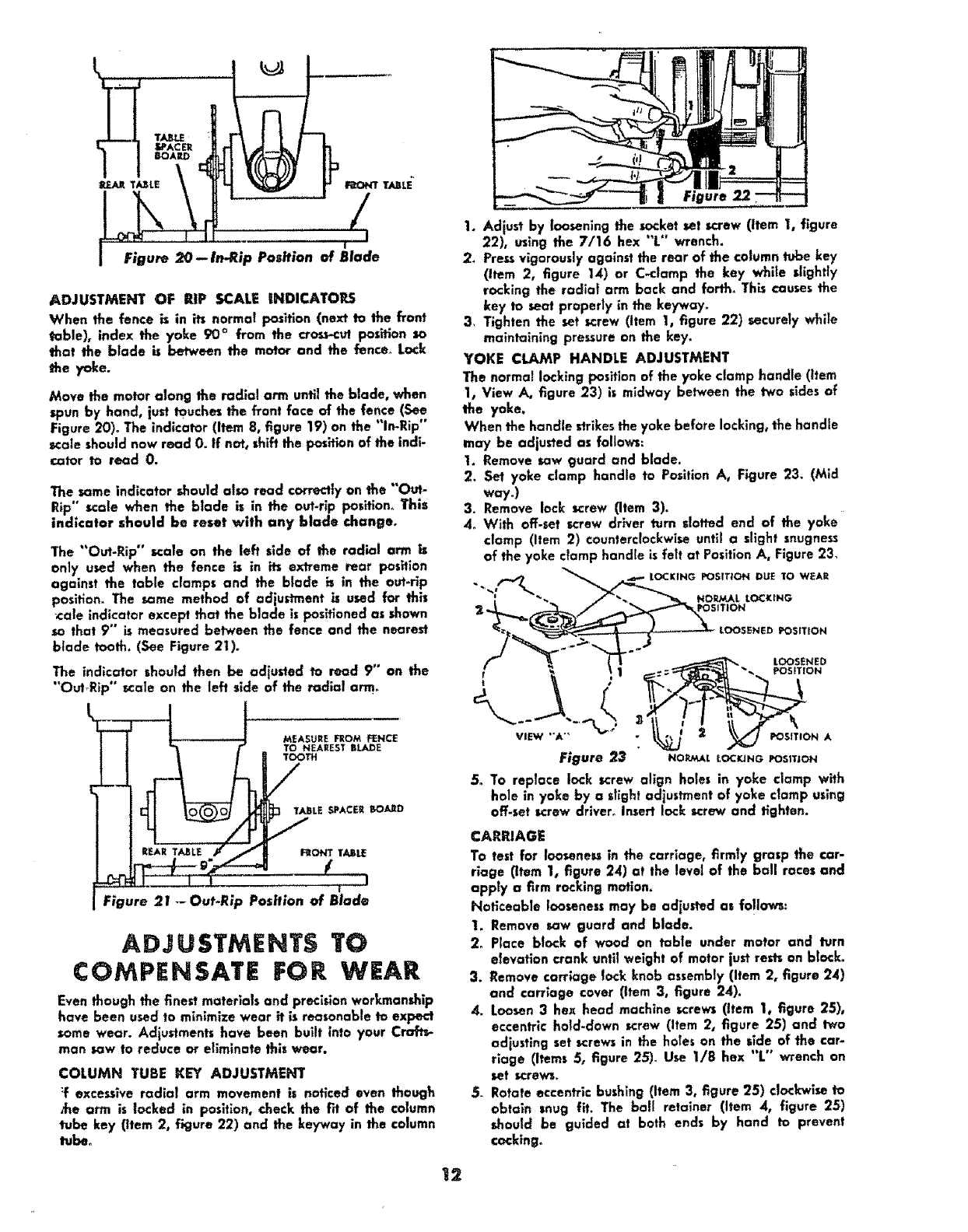
ADJUSTMENTOF RiPSCALEINDICATORS
Whenthefenceisinitsnormalposition(nexttothefront
table),indextheyoke90 ° from the €_oss-cut position so
that the blade is between the motor and the fence° Lock
Move the molar along the radial arm uoti_the blade, when
spun by hand, just _uches the front face of the fence (See
Figure 20)° The indicator (Item 8, figure 19) on the "In-Rip"
scale should now read 0. If not, shift the position of the indi-
ca|at to read 0.
The same indicator should also read correctly on the "'Out-
Rip" scale when the blade is in the out-rip positlon_ This
indicator should be reset with any blade change.
The "Out-Rip" scale on the left side of the radial arm is
only used when the fence is in its extreme rear position
against the table clamps and the blade is in the out-rlp
position. The some method of adjustment is used for this
cote indicator except that the blade ispositioned as shown
so that 9°° is measured between the fence and the nearest
blade tooth. (See Figure 2I).
The indicator should then be adjusted to read 9" an the
"Out-Rip" _cale on the left side of the radial arm_
hEAR T,/_ LEg._
MEASURE FROM FENCE
TO NEAREST BI.J_DE
TOOTH
I
Figure 21 .-Out-Rip Position of Blade
ADJUSTMEHT$ TO
COMPENSATE FOR WEAR
Even though the finest materials and procidon workmanship
have been u_ed to minimize wear it is reasonable to expect
some wear. Adjustments have been built into your Croft_
man sow to reduce or eliminate this wear.
COLUMN TUBE KEY ADJUSTMENT
:f excessive radlat arm movement is noticed even though
,t_e arm is locked in position, check the fit of the column
tube key (item 2, figure 22) and the key'way in the column
tuber
Figure
1. Adjust by loosening the socket set screw (item I, figure
22), using the 7/16 hex "t" wrench.
2. Prexsvigorously against the rear of the column tube key
(Item 2, figure 14) or C-clamp the key while slightly
rocking the radial arm back and forth_ This causes the
key to seat properly in the keywoTo
3, Tighten the set screw (Item 1, figure 22) securely while
maintaining pressure on the key.
YOKE CLAMP HANDLE ADJUSTMENT
The normal locking position of the yoke clamp handle (item
1, View A_ figure 23) is midway between the two sides of
the yoke.
When the handle strikesthe yoke before locking, the handle
may be adjusted as follows:
1. Remove sow guard and blade.
2. Set yoke clamp handle to Position A, Figure 23. (Mid
way.)
3. Remove lock screw (Item 3).
4o With off-set screw driver turn slotted end of the yoke
clamp (Item 2) counterclockwise until a slight snugness
of the yoke clamp handle is felt at PositionA, Figure 23.
a___s G _osmoN ou_ To WEAR
NOR/€_ L LOCKING
1710N
..-..3._ LOOSENED _SITION
_ "" LOOSENED
POSitION A
Figure 23 NO_U,_,_OC_NGPOSlnON
5o To replace lock screw align holes in yoke clamp with
hole in yoke by a slight odiustment of yoke clamp using
off-set screw driver° Insert lock screw and tighten.
CARRIAGE
To test for loosenessin the carriage, firm|y grasp the car-
riage (Item 1, figure 24) at the levet of the baff races and
apply a firm rocking motion.
Noticeable looseness may be adiusted as follows:
1. Remove sow guard and blade.
2o Place block of wood on table under motor and turn
elevation crank until weight of motor just rests on block.
3. Remove carriage lock knob assembly (Item 2, figure 24)
and carriage cover (Item 3, figure 24).
4. Loosen 3 hex head machine screws (item 1, figure 25),
eccentric hold-down screw (Item 2, figure 25) and two
adjusting set screwsin the holes on the side of the car-
riage (Items 5, figure 2S)o Use 1/8 hex "L" wrench on
set screws,
5_ Rotate eccentric bushing (Item 3, figure 25) clockwise to
obtain snug fit. The bali retainer (Item 4, figure 25)
should be guided at both ends by hand to prevent
cocking°
12




